The NVIDIA GeForce GTX 1080 & GTX 1070 Founders Editions Review: Kicking Off the FinFET Generation
by Ryan Smith on July 20, 2016 8:45 AM EST
It has taken about 2 years longer than we’d normally see, but the next full generation of GPUs are finally upon us. Powered by FinFET based nodes at TSMC and GlobalFoundries, both NVIDIA and AMD have released new GPUs with new architectures built on new manufacturing nodes. AMD and NVIDIA did an amazing job making the best of 28nm over the 4 year stretch, but now at long last true renewal is at hand for the discrete GPU market.
Back in May we took a first look at the first of these cards, NVIDIA’s GeForce GTX 1080 Founders Edition. Launched at $700, it was immediately the flagship for the FinFET generation. Now today, at long (long) last, we will be taking a complete, in-depth look at the GTX 1080 Founders Edition and its sibling the GTX 1070 Founders Edition. Architecture, overclocking, more architecture, new memory technologies, new features, and of course copious benchmarks. So let’s get started on this belated look at the latest generation of GPUs and video cards from NVIDIA.
| NVIDIA GPU Specification Comparison | ||||||
| GTX 1080 | GTX 1070 | GTX 980 | GTX 970 | |||
| CUDA Cores | 2560 | 1920 | 2048 | 1664 | ||
| Texture Units | 160 | 120 | 128 | 104 | ||
| ROPs | 64 | 64 | 64 | 56 | ||
| Core Clock | 1607MHz | 1506MHz | 1126MHz | 1050MHz | ||
| Boost Clock | 1733MHz | 1683MHz | 1216MHz | 1178MHz | ||
| Memory Clock | 10Gbps GDDR5X | 8Gbps GDDR5 | 7Gbps GDDR5 | 7Gbps GDDR5 | ||
| Memory Bus Width | 256-bit | 256-bit | 256-bit | 256-bit | ||
| VRAM | 8GB | 8GB | 4GB | 4GB | ||
| FP64 | 1/32 | 1/32 | 1/32 | 1/32 | ||
| TDP | 180W | 150W | 165W | 145W | ||
| GPU | GP104 | GP104 | GM204 | GM204 | ||
| Transistor Count | 7.2B | 7.2B | 5.2B | 5.2B | ||
| Manufacturing Process | TSMC 16nm | TSMC 16nm | TSMC 28nm | TSMC 28nm | ||
| Launch Date | 05/27/2016 | 06/10/2016 | 09/18/14 | 09/18/14 | ||
| Launch Price | MSRP: $599 Founders $699 |
MSRP: $379 Founders $449 |
$549 | $329 | ||
As a quick refresher, here are the specifications for the new cards. At a high level the Pascal architecture (as implemented in GP104) is a mix of old and new; it’s not a revolution, but it’s an important refinement. Maxwell as an architecture was very successful for NVIDIA both at the consumer level and the professional level, and for the consumer iterations of Pascal, NVIDIA has not made any radical changes. The basic throughput of the architecture has not changed – the ALUs, texture units, ROPs, and caches all perform similar to how they did in GM2xx.
Consequently the performance aspects of consumer Pascal – we’ll ignore GP100 for the moment – are pretty easy to understand. NVIDIA’s focus on this generation has been on pouring on the clockspeed to push total compute throughput to 8.9 TFLOPs, and updating their memory subsystem to feed the beast that is GP104.
GeForce GTX 1080
The GeForce GTX 1080 is a fully enabled implementation of GP104. This means 2560 CUDA cores split up over 20 SMs operating at a blistering boost clock of 1733MHz. NVIDIA is positioning GTX 1080 as a full generational update over GTX 980, and thanks to a combination of a slightly wider GPU and a much faster clockspeed, they can generally deliver on this. By the numbers, GTX 1080 offers 78% more raw compute, texturing, and geometry performance, and 43% more ROP throughput. Of course the latter is as much a product of memory bandwidth as it is the ROPs themselves, and for that NVIDIA has some new memory technologies.
Feeding the beast that is GTX 1080 is 8GB of GDDR5X. A new memory standard that extends the effective memory bandwidth of GDDR5, GTX 1080’s GDDR5X runs at 10Gbps, and is attached to a 256-bit memory bus. This gives GTX 1080 a full 320GB/sec of memory bandwidth to play with, 43% more than GTX 980. And as we’ll see in the coming architectural pages, these raw numbers don’t factor in the architectural improvements that allow the Pascal GPUs to stretch their memory bandwidth even further.
Finally, GTX 1080’s TDP is rated at 180W. This is a slight increase from the past generation, where GTX 980 required 165W. Video card specifications are of course a sliding scale – balancing desired performance with cooling capabilities and power consumption – and ultimately NVIDIA has opted to eat a slight increase in power consumption to allow GTX 1080 to deliver more performance than it otherwise would.
GeForce GTX 1070
Meanwhile below the GTX 1080 we have its lower price and lower performance sibling, the GTX 1070. The standard high-end salvage part, GTX 1070 trades off fewer functional blocks and the lower resulting performance in exchange for a significantly lower price than the GTX 1080. From a hardware perspective, the GTX 1070 utilizes GP104 with 1 of the 4 Graphics Processing Clusters (GPCs) disabled. Relative to GTX 1080, this knocks off around 25% of the shading/texturing/compute performance. However the memory controllers and ROP partitions remain untouched. With this configuration NVIDIA is pitching the GTX 1070 as a full generational update to the GTX 970, and with any luck, the GTX 1070 will be as well accepted as its extremely successful predecessor.
All told then, GTX 1070 provides 1920 CUDA cores split up over 15 SMMs. Those 15 SMMs are in turn running at a base clockspeed of 1506MHz and a boost clock of 1683MHz. This is slightly lower than GTX 1080, but as we’ll see in our full benchmark section, the official clockspeeds have a very little impact; it’s the disabled GPC that really makes the difference. By the numbers, relative to the GTX 970 the GTX 1070 offers 65% more shading, texturing, and geometry throughput, and 63% more ROP throughput. The latter coming as a courtesy of both the higher clockspeeds and the fact that GTX 1070 ships with all 64 ROPs enabled, versus 56 of 64 on GTX 970.
As for memory, GTX 1070 doesn’t get GDDR5X. Instead the card gets 8GB of GDDR5 running at 8Gbps. This delivers a total memory bandwidth of 256GB/sec, and again unlike GTX 970, there is nothing going on with partitions here, so all of that memory and all of that bandwidth is operating in one contiguous partition, giving the GTX 1070 an effective memory bandwidth increase of 31%. GTX 1070 is the first NVIDIA card to ship with 8Gbps GDDR5, a memory speed I once didn’t think possible. NVIDIA and the memory partners are pushing GDDR5 to the limit by doing this, but at this point in time this is the most economical way to boost memory bandwidth without resorting to more exotic and expensive solutions like GDDR5X.
GTX 1070 is rated for a 150W TDP; this is a smaller, 5W increase over its predecessor. Despite the official TDP, it should be noted that NVIDIA is not pitching this card as their 150W champion for systems with a single 6-pin PCIe power cable, and it will require a more powerful 8-pin cable. For systems that need a true sub-150W card, this is where the GTX 1060 will step in. Otherwise NVIDIA is making a very interesting power play here what is now the second most powerful video card on the market does so on just 150W.
Cards, Pricing, & Availability
For the GTX 1000 series, NVIDIA has undertaken a significant change in how they handle reference boards and how those boards are priced. What were once reference boards are now being released as the Founders Edition boards. These boards are largely similar to NVIDIA’s last-generation reference boards, built using a standard PCB and NVIDA’s high-end blower cooler, along with some additional cooling upgrades. The Founders Edition cards will, in turn, not be sold at NVIDIA’s general MSRP for each family, but rather they will be sold as premium cards for around $80-$100 more.
As a result we have two prices to talk about. For the GTX 1080, the family MSRP is $599. At the base level this is a slight price increase over the GTX 980, which launched at $549. As the Founders Edition cards are not being sold at this price, it is instead being filled by semi and fully custom cards from NVIDIA’s partners. These custom cards offer a mix of designs, but at the cheapest level (those cards closest to the MSRP) we’re predominantly looking at dual fan open air cooled cards. The rest of the lineup is filled by more advanced cards (including some closed loop liquid coolers) with factory overclocks and other features that are sold at a premium price. The GTX 1080 Founders Edition card, for its part, fits in to this picture at $699, a $100 premium.
| GeForce GTX 1080 Configurations | ||||
| Base | Founders Edition | |||
| Core Clock | 1607MHz | 1607MHz | ||
| Boost Clock | 1733MHz | 1733MHz | ||
| Memory Clock | 10Gbps GDDR5X | 10Gbps GDDR5X | ||
| Cooler | Manufacturer Custom (Typical: 2 or 3 Fan Open Air) |
NVIDIA Reference (Blower w/Vapor Chamber) |
||
| Price | Starting at $599 | $699 | ||
The story then is much the same for the GTX 1070. Its family MSRP is $379, which its Founders Edition counterpart is being sold for $449. At $379 for the family MSRP, this is a $40 price increase over the GTX 970, and I am curious over the long run whether this will significantly impact sales. One of the factors that made GTX 970 such a well-received card was its price, and this takes away from that by a bit. Otherwise, as with the GTX 1080, the partners’ custom cards for the GTX 1070 run the gamut from simple dual fan cards at the cheapest prices, up to premium, factory overclocked cards at the highest prices.
| GeForce GTX 1070 Configurations | ||||
| Base | Founders Edition | |||
| Core Clock | 1506MHz | 1506MHz | ||
| Boost Clock | 1683MHz | 1683MHz | ||
| Memory Clock | 8Gbps GDDR5 | 8Gbps GDDR5 | ||
| Cooler | Manufacturer Custom (Typical: 2 or 3 Fan Open Air) |
NVIDIA Reference (Blower w/Vapor Chamber) |
||
| Price | Starting at $379 | $449 | ||
Unfortunately for everyone involved, the plan for pricing and reality haven’t quite agreed with each other. Even now, 2 months after the launch of the GTX 1080, card supplies are slim. There is effectively a shortage of GTX 1080 cards, as while NVIDIA insists they are continuing to ship out a good supply, those cards appear to be getting plucked off of virtual and physical shelves almost as quickly. As of the time this paragraph was written, Newegg only has a single GTX 1080 in stock, a Founders Edition card at $699.
For the last several generations it has been pretty common for the first batch or two of high-end cards to sell out, however to be sold out for 2 months is a lot less common. Other than NVIDIA’s Titan series card, which are a special case due to their prosumer market, I can’t immediately recall the last time an NVIDIA flagship card was this hard to get this late after a launch. For NVIDIA and its partners there are worse problems in the world – it’s better to have too few cards than too many cards that you can’t sell – but it certainly puts a damper on things for both the partners and for customers.
Meanwhile the GTX 1070 situation is noticeably better, though still not great. About half of the models that Newegg carries are in stock at any given time. So potential GTX 1070 owners have more options, though if they’re after a specific card they may find themselves waiting.
But the real problem with this shortage is that it has removed any incentive to keep prices close to NVIDIA’s MSRP. GTX 1070 prices start at $429 instead of $379, while GTX 1080 prices start at $649 (and if you actually want a card in stock, that’ll be $699). These are prices that are closer to last generations GTX 980 Ti/980 prices than they are 980/970, and it means that the actual GTX 1000 series price premium is much higher as it stands, at $100+ compared to the last generation. Given that these cards keep selling out, clearly there are enough buyers willing to pay these prices – it’s the free market in action – but it means NVIDIA’s MSRPs are for the moment an imaginary number. At this point all that we can do is hope that once the shortage breaks, there will be more intensive competition between the partners and retailers, and prices will fall down to MSRP.
As for the larger competitive landscape, as we’re looking at high-end cards at the start of a new generation, there really isn’t any competition to speak of. The GTX 1000 series sets a new bar for performance, and while last generation cards are being priced to clear out inventories, they aren’t performance competitive with the new cards. Meanwhile stalwart competitor AMD has opted to go after the mainstream market first rather than starting at the high-end. This means that the GTX 1080 and GTX 1070 will not have any competition for at least the next few months, leaving NVIDIA solely in the driver’s seat at the high-end, and in sole possession of the GPU performance crown.
| Summer 2016 GPU Pricing Comparison | |||||
| AMD | Price | NVIDIA | |||
| $699 | GeForce GTX 1080 | ||||
| Radeon R9 Fury X Radeon R9 Nano |
$459 | ||||
| $439 | GeForce GTX 1070 | ||||
| $419 | GeForce GTX 980 Ti | ||||
| Radeon R9 390X | $329 | ||||
| Radeon R9 390 | $249 | GeForce GTX 1060 GeForce GTX 970 |
|||
| Radeon RX 480 (8GB) | $239 | ||||


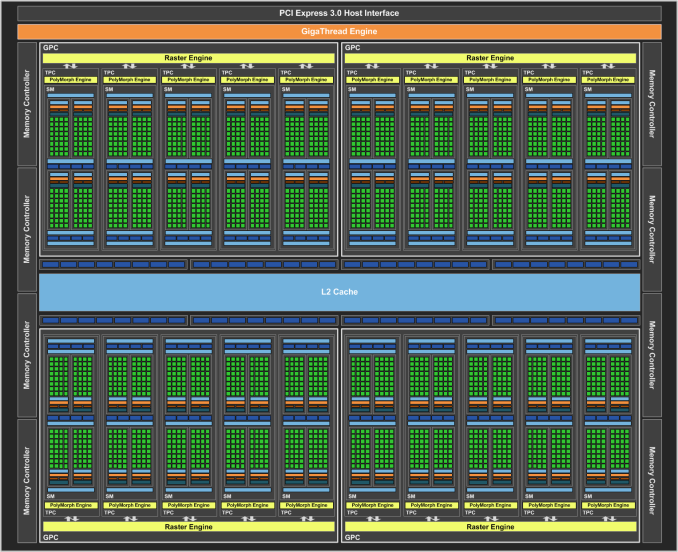
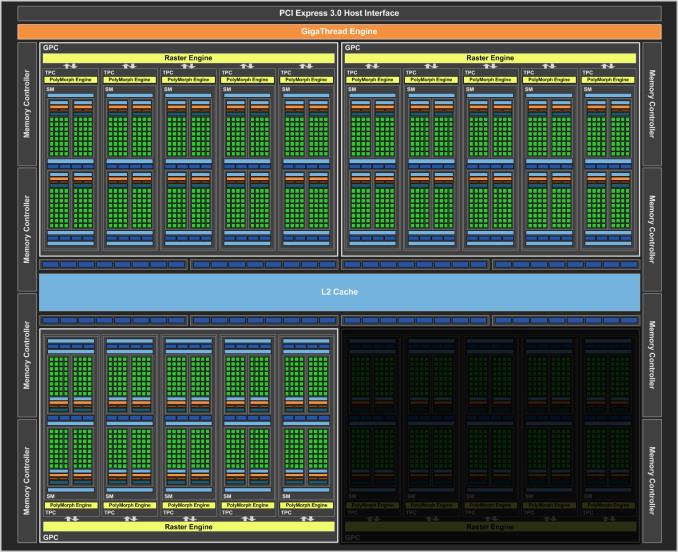
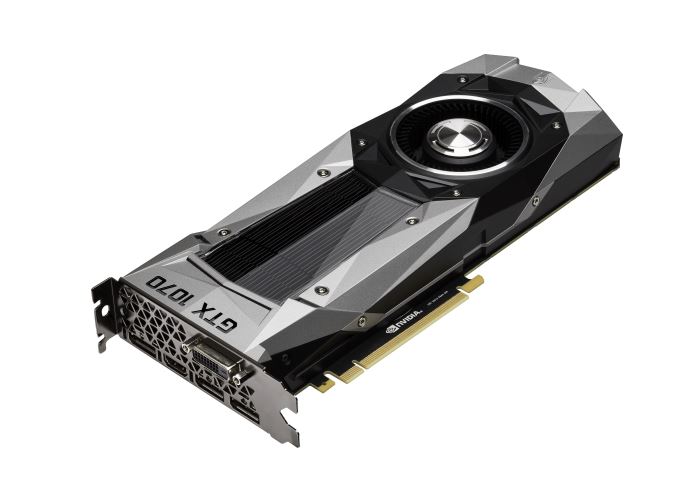
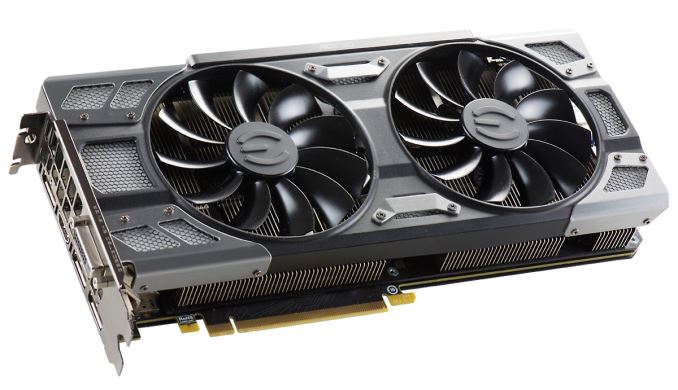
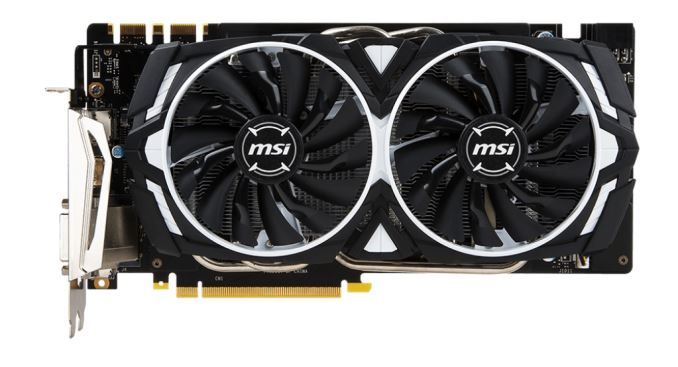








200 Comments
View All Comments
TestKing123 - Wednesday, July 20, 2016 - link
Sorry, too little too late. Waited this long, and the first review was Tomb Raider DX11?! Not 12?This review is both late AND rushed at the same time.
Mat3 - Wednesday, July 20, 2016 - link
Testing Tomb Raider in DX11 is inexcusable.http://www.extremetech.com/gaming/231481-rise-of-t...
TheJian - Friday, July 22, 2016 - link
Furyx still loses to 980ti until 4K at which point the avg for both cards is under 30fps, and the mins are both below 20fps. IE, neither is playable. Even in AMD's case here we're looking at 7% gain (75.3 to 80.9). Looking at NV's new cards shows dx12 netting NV cards ~6% while AMD gets ~12% (time spy). This is pretty much a sneeze and will as noted here and elsewhere, it will depend on the game and how the gpu works. It won't be a blanket win for either side. Async won't be saving AMD, they'll have to actually make faster stuff. There is no point in even reporting victory at under 30fps...LOL.Also note in that link, while they are saying maxwell gained nothing, it's not exactly true. Only avg gained nothing (suggesting maybe limited by something else?), while min fps jumped pretty much exactly what AMD did. IE Nv 980ti min went from 56fps to 65fps. So while avg didn't jump, the min went way up giving a much smoother experience (amd gained 11fps on mins from 51 to 62). I'm more worried about mins than avgs. Tomb on AMD still loses by more than 10% so who cares? Sort of blows a hole in the theory that AMD will be faster in all dx12 stuff...LOL. Well maybe when you force the cards into territory nobody can play at (4k in Tomb Raiders case).
It would appear NV isn't spending much time yet on dx12, and they shouldn't. Even with 10-20% on windows 10 (I don't believe netmarketshare's numbers as they are a msft partner), most of those are NOT gamers. You can count dx12 games on ONE hand. Most of those OS's are either forced upgrades due to incorrect update settings (waking up to win10...LOL), or FREE on machine's under $200 etc. Even if 1/4 of them are dx12 capable gpus, that would be NV programming for 2.5%-5% of the PC market. Unlike AMD they were not forced to move on to dx12 due to lack of funding. AMD placed a bet that we'd move on, be forced by MSFT or get console help from xbox1 (didn't work, ps4 winning 2-1) so they could ignore dx11. Nvidia will move when needed, until then they're dominating where most of us are, which is 1080p or less, and DX11. It's comic when people point to AMD winning at 4k when it is usually a case where both sides can't hit 30fps even before maxing details. AMD management keeps aiming at stuff we are either not doing at all (4k less than 2%), or won't be doing for ages such as dx12 games being more than dx11 in your OS+your GPU being dx12 capable.
What is more important? Testing the use case that describes 99.9% of the current games (dx11 or below, win7/8/vista/xp/etc), or games that can be counted on ONE hand and run in an OS most of us hate. No hate isn't a strong word here when the OS has been FREE for a freaking year and still can't hit 20% even by a microsoft partner's likely BS numbers...LOL. Testing dx12 is a waste of time. I'd rather see 3-4 more dx11 games tested for a wider variety although I just read a dozen reviews to see 30+ games tested anyway.
ajlueke - Friday, July 22, 2016 - link
That would be fine if it was only dx12. Doesn't look like Nvidia is investing much time in Vulkan either, especially not on older hardware.http://www.pcgamer.com/doom-benchmarks-return-vulk...
Cygni - Wednesday, July 20, 2016 - link
Cool attention troll. Nobody cares what free reviews you choose to read or why.AndrewJacksonZA - Wednesday, July 20, 2016 - link
Typo on page 18: "The Test""Core i7-4960X hosed in an NZXT Phantom 630 Windowed Edition" Hosed -> Housed
Michael Bay - Thursday, July 21, 2016 - link
I`d sure hose me a Core i7-4960X.AndrewJacksonZA - Wednesday, July 20, 2016 - link
@Ryan & team: What was your reasoning for not including the new Doom in your 2016 GPU Bench game list? AFAIK it's the first indication of Vulkan performance for graphics cards.Thank you! :-)
Ryan Smith - Wednesday, July 20, 2016 - link
We cooked up the list and locked in the games before Doom came out. It wasn't out until May 13th. GTX 1080 came out May 14th, by which point we had already started this article (and had published the preview).AndrewJacksonZA - Wednesday, July 20, 2016 - link
OK, thank you. Any chance of adding it to the list please?I'm a Windows gamer, so my personal interest in the cross-platform Vulkan is pretty meh right now (only one title right now, hooray! /s) but there are probably going to be some devs are going to choose it over DX12 for that very reason, plus I'm sure that you have readers who are quite interested in it.